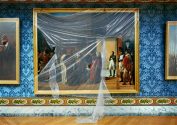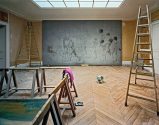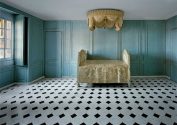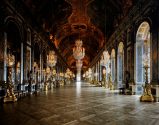In Robert Polidori’s “Parcours Muséologique Revisité”, he approaches the restoration and revision of Versailles in a similar method as his past photographic projects. He continues the idea of presenting the interior of a room as a means of insight into the soul of those who inhabited them. Polidori believes that a room’s interior communicates the values and ideas of its inhabitants and its details on the walls present the way that the person intended themselves to be viewed. Unlike the earlier projects of Hurricane Katrina and Chernobyl where these interior spaces were captured after a disastrous event, Versailles is presented over 26 years of restoration. Each room in presented in rich detail, conveying layers of its history of the many occupants throughout time. With its constant revisions by Louis XIV and his predecessors as well as the restorations, Polidori is able to reveal a rich layering of personalities and ideas.
With this body of work Polidori challenges the idea of restoring the palace to its original state. For Polidori, Versailles is not so much genuinely old as a constant re-fabrication of the old in order to keep the past alive. Polidori states “With Versailles, I had the opportunity to witness museum restoration but I realized what was really going on was historical revisionism. What does it mean to restore something? It means to make something old new again… When you choose to restore a certain room as it was in a certain period, the period you chose is based on your contemporary worldview.”










